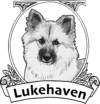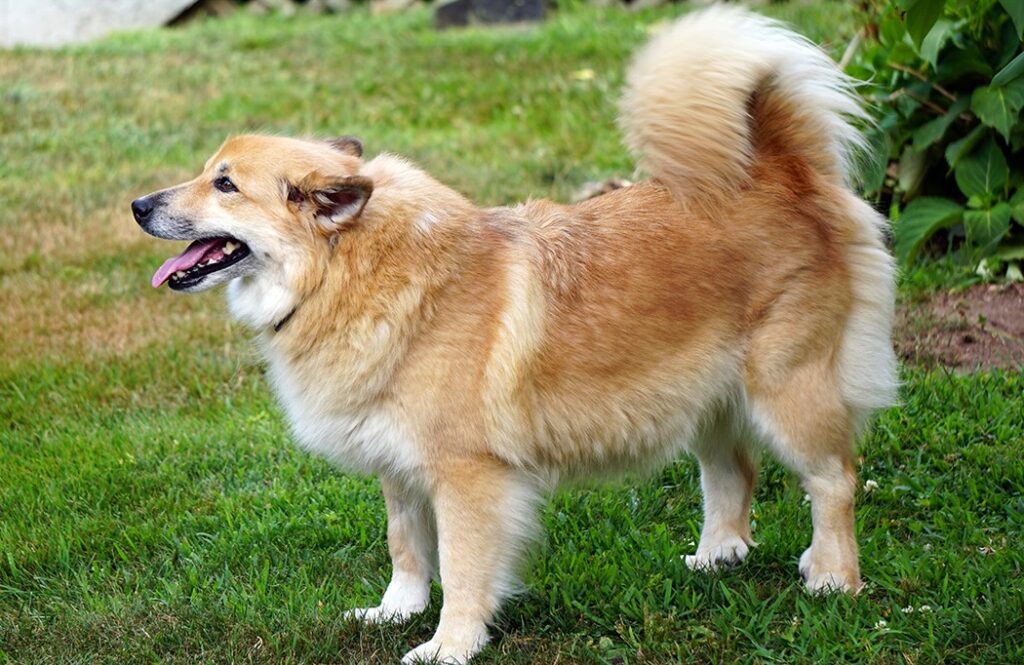Why Do Icelandic Sheepdogs Have Double Dew Claws?
Double Dew Claws in Dogs is an important trait to understand If you’re thinking about bringing an Icelandic Sheepdog into your life. As you’ve probably noticed, one of their most distinctive physical features are their double dew claws. At first glance, these additional digits on their hind legs might seem like an unusual quirk, but they tell a fascinating story about the breed’s history, adaptability, and enduring heritage.
Historical Purpose & Heritage Center Insights
Originating in Iceland, a country famous for its rugged, volcanic terrain, Icelandic Sheepdogs were bred to herd sheep and protect livestock under harsh conditions. Their work demanded exceptional agility and balance—especially when navigating steep, rocky slopes or sudden volcanic scree. Double dew claws provided precisely the edge these dogs needed, enhancing their stability and offering extra grip on challenging surfaces.
At Iceland’s Sheepdog Heritage Center (opened May 2025 in Skagafjörður), visitors can see rare archival materials—such as a late-1800s breeding ledger and an 1842 engraving—depicting dew-clawed dogs at work. Curators emphasize that early shepherds selected for dew claws because they reduced slipping and injury during rapid direction changes, jumps, and sudden stops while rounding up sheep in unpredictable weather. These museum exhibits reinforce that dew claws were not merely a passive feature but a critical adaptation for survival and efficiency in Iceland’s demanding environment, highlighting the importance of double dew claws.
Anatomy & Breed Standard
Anatomically, dew claws are fully formed digits, complete with bones, joints, and nails—much like a dog’s other toes. However, they’re positioned higher on the leg and typically don’t make contact with the ground in most dog breeds. Most breeds have a single dew claw on each front leg and occasionally on their rear legs. Icelandic Sheepdogs, however, frequently feature double dew claws on their hind legs, a trait they share with only a handful of other breeds (such as the Great Pyrenees and Beauceron).
It’s important to note that not all Icelandic Sheepdogs have double dew claws—some may have a single dew claw on each hind leg. The American Kennel Club (AKC) and Icelandic Sheepdog Association of America (ISAA) breed standard both specify that each Icie must have at least single dew claws on all four feet, with double dew claws on the rear feet being a desirable trait. Doubles on the front feet can also occur, though they are less common. While the breed standard favors double dew claws in conformation competitions, any Icelandic Sheepdog with single dew claws on the rear legs (provided all four dew claws are present) can still achieve prestigious titles, including Best of Breed.
Dew Claws as a Sign of Purity and Preservation
From a breeder’s perspective at Lukehaven, we value these double dew claws as more than just a historical curiosity. They are a visible indicator of the breed’s pure lineage and authenticity—passed down genetically from the original working dogs of the 9th century. Dew claws remain a crucial link to those Viking-era spitz herders, and their presence helps breeders confirm adherence to the traditional breed standards that have been upheld for centuries.
The Heritage Center’s “Living History” exhibit highlights how dew claws were celebrated as a hallmark of a true Icelandic Sheepdog. Visitors learn that in the late 19th and early 20th centuries, local shepherds would test puppies’ dew claws by running them across turf and uneven ground. Puppies whose dew claws provided a noticeable advantage in stability and agility were marked as prime breeding stock. This practice underscores dew claws’ longstanding role in preserving the working capability of Icelandic Sheepdogs, particularly emphasizing the value of double dew claws.
Care & Maintenance of Dew Claws
Proper care of dew claws and double dew claws in dogs is crucial for your Icie’s comfort and health. Because dew claws typically do not make contact with the ground, their nails do not wear down naturally and can grow long very quickly. Overgrown nails can curl back into the pad, causing pain, infection, or even lameness. Regular trimming is essential to prevent these issues.
Given the frequency of trimming required for Icelandic Sheepdogs—especially those with double dew claws—learning how to safely trim your dog’s nails yourself is a valuable skill. If you’re unfamiliar with the process, consider the following steps:
- Use the Right Tools: Invest in quality, straight-edge nail clippers designed for dogs, along with styptic powder to stop bleeding in case you clip too close.
- Familiarize Early: Begin gently handling and inspecting puppy paws as early as 8–10 weeks, so they become comfortable with nail care.
- Identify the Quick: In dogs with light-colored nails, you can see the “quick” (the blood supply) inside the nail. For dark nails, trim small amounts at a time and watch for a chalky white circle.
- Trim Regularly: Aim for every 3–4 weeks—more often if your Icie’s dew claws grow rapidly.
- Reward & Reassure: Use treats and praise to create a positive experience, reducing stress for both dog and owner.
At the Heritage Center, caretakers demonstrate nail-trimming techniques to new Icie owners. They note that in the past, shepherds would use pumice stones or rough lava pebbles to help wear down dew claw nails—an improvised but effective method in the field. Today, modern tools make the process safer and more precise, which is especially helpful for managing double dew claws.
Preserving a Living Legacy
Today, while your Lukehaven Icelandic Sheepdog might not be herding sheep over volcanic rock every day, those distinctive dew claws remain a powerful symbol of the breed’s past. They remind us of Icies’ incredible adaptability and resilience—qualities that helped them thrive in Iceland’s demanding environment and now make them exceptional companions worldwide, thanks in part to their double dew claws.
When you glance down and see those extra digits on your Icelandic Sheepdog, remember you’re witnessing a unique piece of canine history—a small detail with a big story that stretches from Viking farms to your living room. By valuing and caring for those dew claws, you help ensure that the true essence of the breed endures for generations to come.

